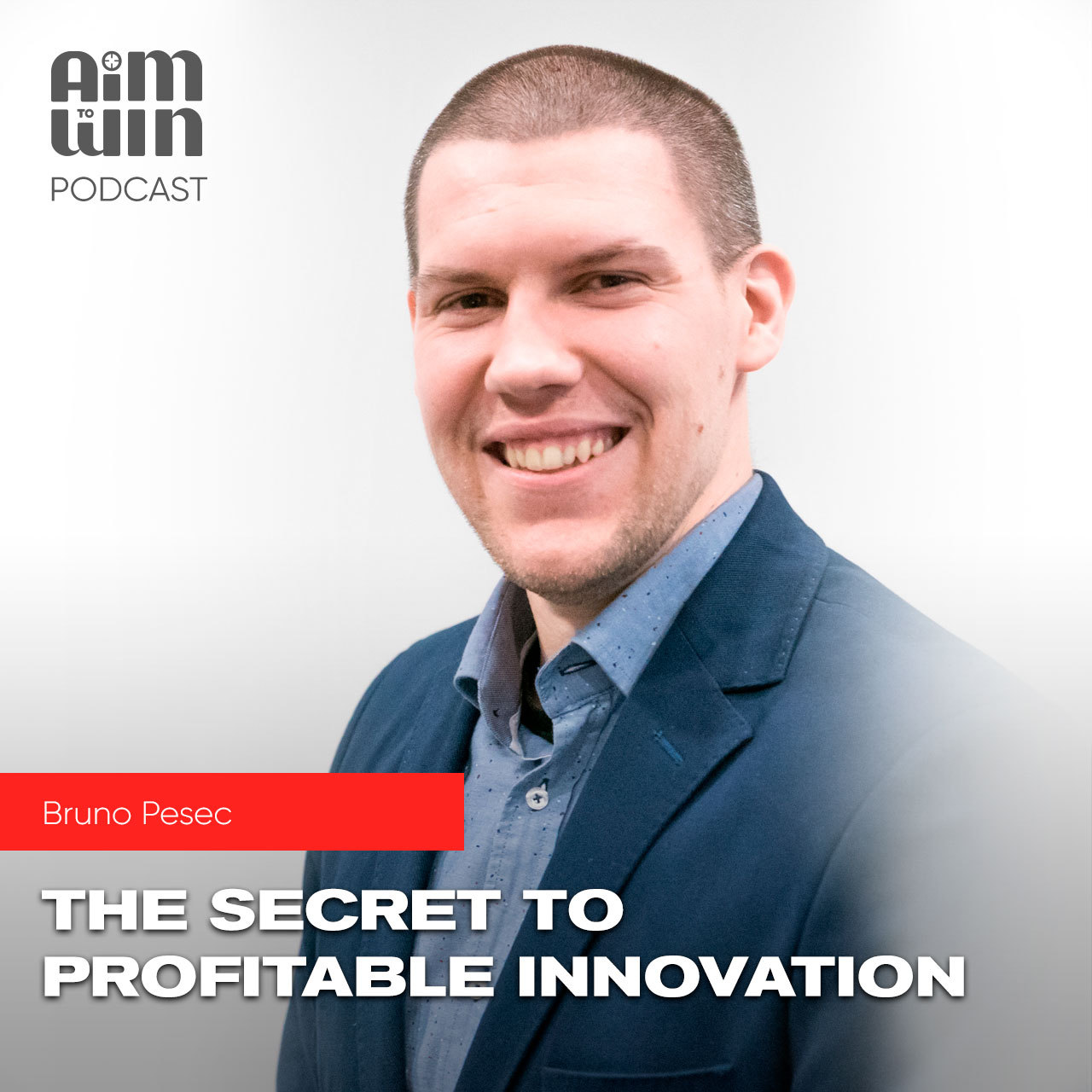Listen to the episode right here.
Bruno Pešec helps business leaders innovate profitably. He is the rare innovator who can claim that he’s worked on a regulation-defying freight train and an award-winning board game.
In addition to his corporate experience with brands like DNV, DNB, and Kongsberg Group, Bruno runs a community of entrepreneurs of several thousand members. He is currently undertaking a doctorate in organizational change, with a specific focus on the issues with innovation in large enterprises.
Bruno Pešec Podcast Highlights
Who is Bruno Pešec?
One project that stands out to Bruno was the regulation-defying freight train, where he worked on a team to manufacture something the client thought was impossible. Even when it was completed, the customer still couldn’t believe that they had achieved it!
This led Bruno to start thinking about what innovation really means and how to succeed. If an organization wants to remain innovative, they need to profit from the innovation but so many businesses don’t consider how innovation impacts the top line revenue.
How can a business know that what they are innovating is the right move?
The first question when it comes to innovation is “who is this for?” and “what is this really about?”. An unfinished thought can be dangerous to invest in and can kill a business if you are not careful.
Small preliminary questions can save you a lot of wasted time and money. The best start for your ideas always comes from your existing customers. Look for Strategy Gaps, for needs that you are not meeting right now and for customers similar to your existing base that can serve too.
It can be as simple as a conversation. Relying on technology to do your research for you is a mistake. The person with the idea should be as close to the customer and the data as possible.
Innovation is a numbers game and you have to invest in a bunch to find the winner. It’s a process and a system for recognizing the right idea to invest in.
Systematizing Innovation
There needs to be a crystal clear direction of the organization. As a small business owner, you know you have succeeded when your employers are coming up with ideas on their own and executing them, and they are aligned with the vision for the business. You need to be very specific about the goals of the company and then communicate that to your team.
All they need to know for magic to happen is that you are trying to make the lives of your specific customer easier in a specific way. That will align those ideas with the purpose and strategy of your organization.
Many leaders make the mistake of assuming that because the vision in their head is clear to everyone else. If you never communicate your vision, how can you expect your team to know what it is.
It’s all about thinking about the customer and aligning everything to what they need.
The job of the leader is to set the parameters around innovation and being willing to be challenged, but not changing the direction every other week and confusing everyone. CEOs and leaders need to be aware of the weight of their words and authority.
How does innovation change between small businesses and larger organizations?
Smaller businesses usually have one strategy, which is how it should be. That focus is their competitive advantage. With larger organizations, the strategies become more diverse, but as a whole the top leadership needs to have a central innovation strategy that everything else is built around.
Smaller businesses need to invest their time into understanding their customers. Cost reduction becomes a side effect of focusing on the value for the customer and the fastest way to adjust is to stay in touch with them. When the pandemic started, the companies that ignored it and went on assuming business as usual.
Innovators innovate and customers validate. As the professional, your job is to critically listen to the customer and create something based on that.
How do you measure innovation?
The time frames for innovation are different. It can sometimes take five to seven years before returns start to happen, which makes it difficult to measure with traditional financial metrics.
Measuring out the speed of learning and testing your assumptions along the way is a good place to start. The first test is whether something needs to exist in the first place. Once you identify the need, can you conceptualize a solution? Next, can you identify enough demand to make it worth it? The faster you can move through those stages, the faster you can innovate and the less you will spend in the process.
There aren’t any sacred metrics that every business needs to track. You need to figure out what metrics are the most important to your business and set up a system to track them.
Links:

